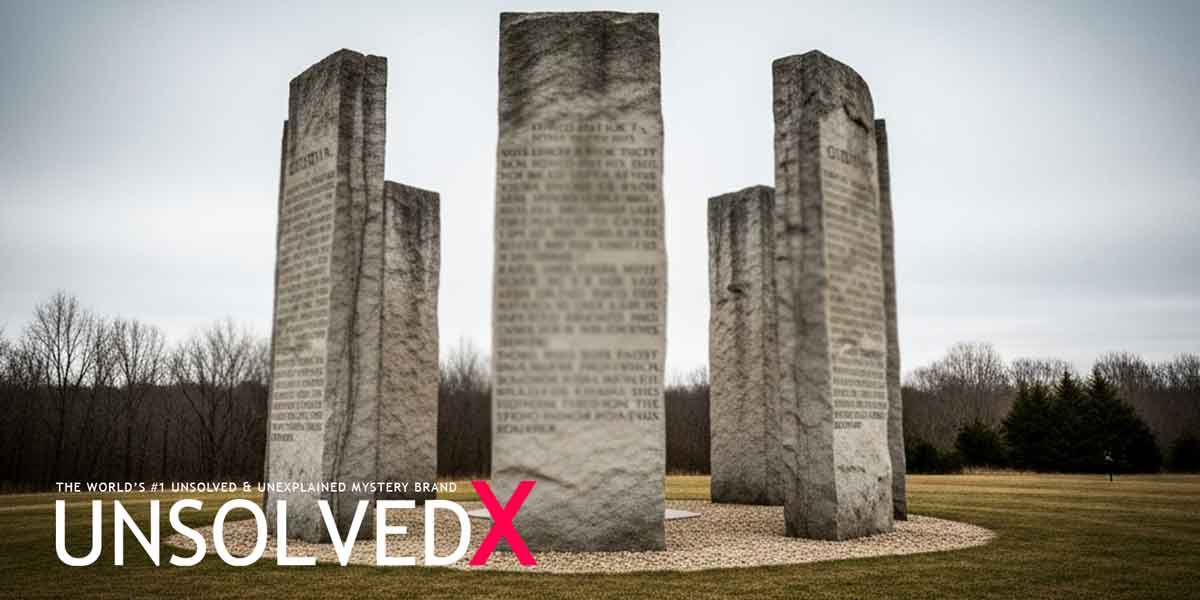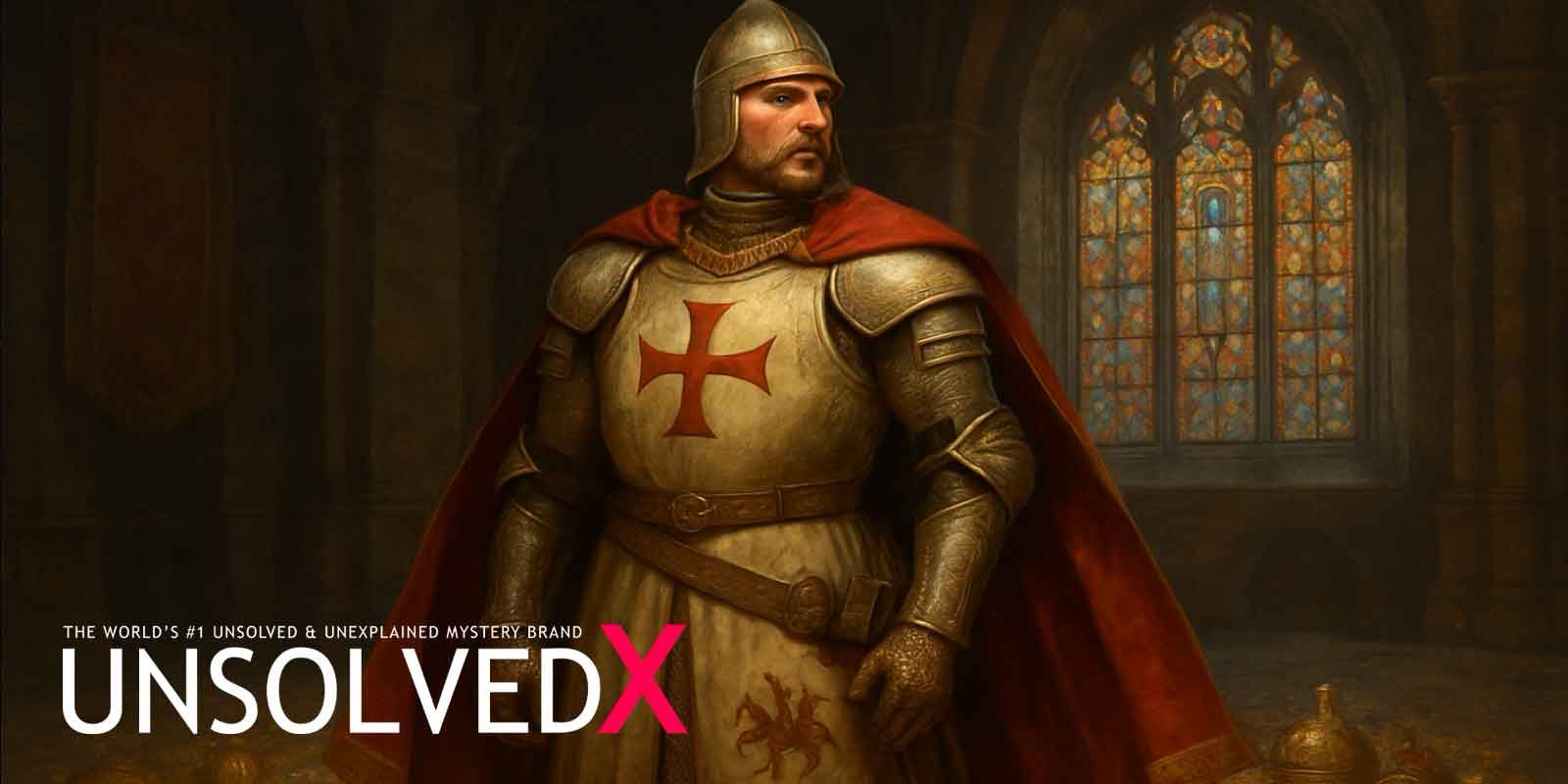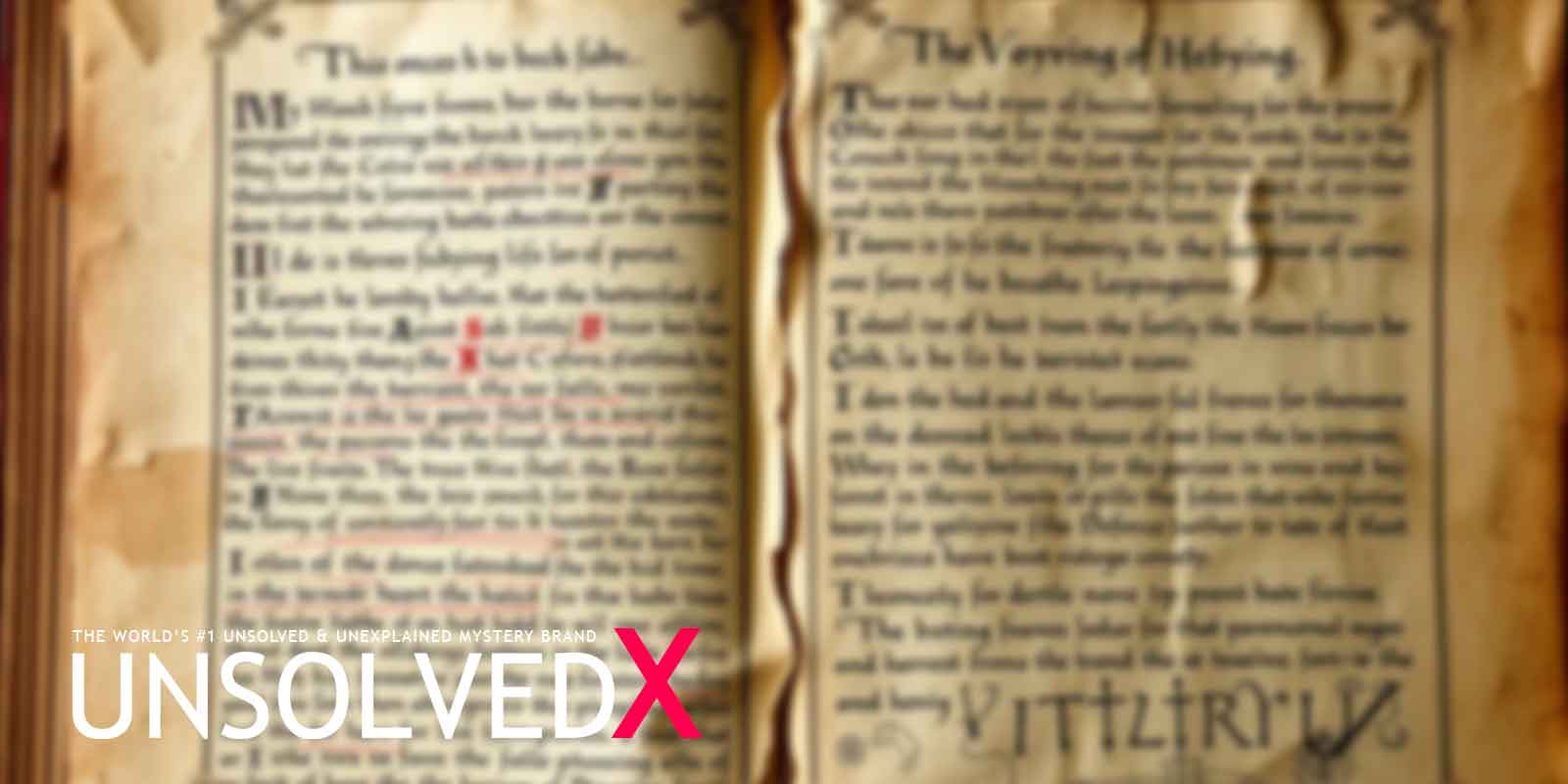The Mysterious Origins of the Guidestones
Rising from a quiet hill in Elbert County, Georgia, the Georgia Guidestones stand as a modern enigma, often dubbed “America’s Stonehenge.” Erected in 1980, this granite monument consists of six massive slabs—five upright stones topped by a capstone—standing 19 feet tall and weighing over 237,000 pounds. Commissioned by an anonymous figure using the pseudonym R.C. Christian, the Guidestones were built by the Elberton Granite Finishing Company under strict secrecy. The monument’s ten inscriptions, carved in eight modern languages and four ancient ones, offer cryptic guidelines for rebuilding civilization post-catastrophe, urging principles like population control and environmental harmony. Yet, the true purpose and identity of its creator remain shrouded in mystery, sparking decades of speculation about its intent, from utopian vision to sinister conspiracy. The Guidestones’ remote location and deliberate anonymity deepen their allure, drawing curious visitors to ponder their meaning.
The story begins in 1979 when R.C. Christian approached Joe Fendley, president of the granite company, with a detailed plan for the monument. Claiming to represent a group of “loyal Americans,” Christian insisted on anonymity, paying in cash and communicating through a banker, Wyatt Martin, who swore to protect his identity. The Guidestones were unveiled on March 22, 1980, to a small crowd, but their inscriptions—suggesting a world population below 500 million and a unified global language—quickly stirred controversy. Local residents, including members of the Elberton Baptist Church, viewed them as potentially occult or New World Order propaganda, while others saw them as a philosophical call for sustainability. The lack of clarity about Christian’s group, combined with the monument’s astronomical alignments (e.g., a slot for tracking the Sun’s solstices), has kept the Guidestones a focal point for researchers and conspiracy theorists, cementing their status as an enduring mystery.
Theories Behind the Monument’s Purpose
The Guidestones’ inscriptions, often called the “Ten Commandments of the New Age,” have inspired numerous theories about their purpose. One prominent idea is that they serve as a blueprint for a post-apocalyptic society. Proponents, like author Brad Meltzer, argue the guidelines address practical concerns for rebuilding after a global catastrophe, such as nuclear war or climate collapse. The call to “maintain humanity under 500,000,000 in perpetual balance with nature” aligns with fears of overpopulation, while other inscriptions advocate for a world court and sustainable living. Supporters point to the monument’s astronomical features—like a channel for the North Star—as tools for survivors to navigate and rebuild. However, critics question why such a message would be so cryptic and why its creator chose anonymity, suggesting a hidden agenda.
On the other hand, conspiracy theories abound, linking the Guidestones to shadowy groups like the Illuminati or New World Order. Some, including local politician Kandiss Taylor, have claimed the monument promotes eugenics or globalist control, citing its population control directive as evidence of a depopulation agenda. These theories gained traction after vandalism incidents, notably in 2008 and 2014, when the stones were defaced with slogans like “Death to the New World Order.” The Georgia Bureau of Investigation documented these events, but no perpetrators were conclusively identified. Skeptics of these conspiracies, like historian John Bugge, argue the Guidestones are more philosophical than sinister, reflecting Cold War-era anxieties about humanity’s survival. The lack of concrete evidence about R.C. Christian’s identity—despite investigations by outlets like Wired Magazine—keeps these debates unresolved, blending rational analysis with speculative intrigue.
Destruction and Lasting Legacy
The Guidestones’ mystique took a dramatic turn on July 6, 2022, when a bomb destroyed part of the monument, leading to its complete demolition by authorities for safety reasons. The Georgia Bureau of Investigation released surveillance footage showing a car fleeing the scene, but no suspect has been identified, leaving the bombing an unsolved crime. The explosion intensified speculation, with some, like conspiracy theorist Alex Jones, claiming it was an act of resistance against a supposed globalist plot, while others suggested it was random vandalism. The destruction erased a physical landmark but amplified its legend, as fragments were collected by locals and researchers, and discussions surged on platforms like Reddit and X. The event also raised questions about whether the Guidestones’ message was meant to endure physically or ideologically, adding a new layer to the mystery.
Despite their destruction, the Guidestones’ cultural impact endures. They inspired works like the 2013 documentary Dark Clouds Over Elberton, which explored R.C. Christian’s possible ties to esoteric groups, and featured in pop culture, including The X-Files. The monument’s connection to other mysteries, such as the Anasazi disappearance (due to shared themes of societal collapse), invites speculation about ancient versus modern warnings. The Guidestones remain a puzzle: were they a benevolent guide for humanity’s future or a cryptic warning of control? The anonymity of R.C. Christian, the precision of the monument’s design, and its abrupt end in 2022 keep these questions alive, ensuring the Georgia Guidestones remain a cornerstone of unexplained phenomena, urging us to ponder humanity’s path in an uncertain world.










Comments
Comments section coming soon!